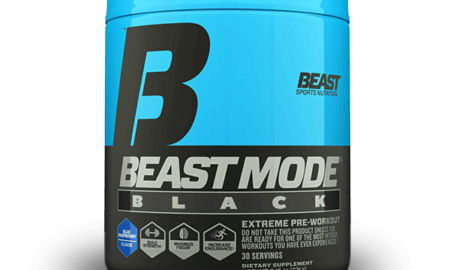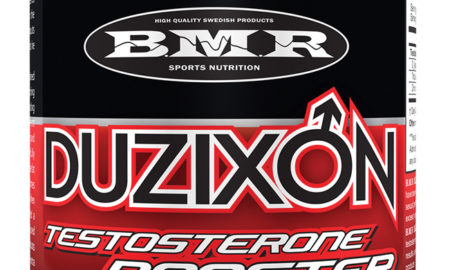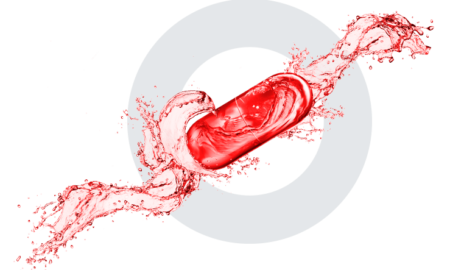
Most of the anabolic effects that occur with human growth hormone release result from the production of insulinlike growth factor 1 by HGH, which largely occurs in the liver. IGF-1, however, is produced in muscle due to intense exercise, even without any HGH stimulus. IGF-1 helps repair damaged muscle fibers by triggering the activity of satellite cells, which are special immature muscle cells. The result is muscle growth.
Insulinlike growth factor 1 has a number of other benefits, including prevention of cardiovascular disease. Having lower levels of IGF-1 is linked to increased artery plaque, ischemic heart disease and stroke. In addition, IGF-1 helps preserve neurons in the brain and prevent brain degeneration. The more IGF-1 older people have, the better their overall heath, brain function and vigor.
While it appears that having more IGF-1 benefits both brain and body, the substance is nonetheless shrouded in controversy, mostly in connection with longevity and cancer. In recent years scientists have observed several animal species born without IGF-1 or with defective IGF-1 systems that live longer than their normal counterparts. A recent study explained the common observation that smaller dogs live longer than larger dogs because they carry around less IGF-1.
The picture in humans, however, is less clear. While many scientists suggest that smaller amounts of IGF-1 extend human life, their reasoning is hardly definitive.
IGF-1 is linked with accelerated human mortality chiefly because of its association with cancer. Some patients with breast, prostate and colon cancers do indeed have abnormally high IGF-1. Some researchers reason that because it aids cellular replication and because cancer involves out-of-control cellular replication, IGF-1 stimulates cancer. IGF-1 also inhibits a process known as apoptosis, whereby a cell detects its abnormalities and destroys itself. Cancer cells resist that process.
One problem with linking IGF-1 to cancer is that no one has yet proved which comes first, the cancer or the IGF-1. Since IGF-1 would facilitate the spread of cancer—most cancers prove fatal only when they begin to spread, or metastasize—some suspect that tumors themselves produce the hormone.
Like other hormones, IGF-1 is carried in the blood mostly bound to proteins. Of the six known protein carriers, the most potent is IGFBP-3. IGF-1 is active only when it isn’t bound to proteins, and only unbound, or free, IGF-1 causes hormone-induced activity.
Why that’s important to all who engage in exercise, especially weight training, is that all types of exercise, particularly lifting weights, stimulate increased IGF-1. If IGF-1 were indeed a carcinogen, as some researchers suggest, you’d have to conclude that exercise itself is the source of cancer. In fact, though, countless studies show the opposite: that exercise, through various mechanisms such as bodyfat reduction, decreases overall cancer risk.
What about those who use human growth hormone? They fall into two broad categories. The first consists of patients with HGH deficiency—some children and some aging adults—who get hormone-replacement therapy. The second consists of athletes, including bodybuilders, whose doses far exceed the therapeutic limits. Because no research predicts the future health effects of using high doses of HGH for extended periods, athletes are in uncharted territory. Studies examining the far more conservative replacement-therapy doses, however, often lasted 10 years and reveal no significant side effects—including no increased rates of cancer.
A recent study involving 6,226 adults over age 20 across the United States examined the connection between IGF-1 and mortality risk.1 It found no link whatever between the hormone and death from cardiovascular disease or cancer. In fact, it revealed that having lesser amounts of both IGF-1 and IGFBP-3 was linked to higher death rates.
Anabolic Steroids and Brain-Cell Destruction
Last year, I reported the results of a study by a Yale University researcher who concluded that testosterone in amounts comparable to what’s prescribed for testosterone-replacement therapy destroyed neurons, the working cells of the brain. It was an in-vitro, or isolated-cell, study, although the author claimed to have used a replacement-therapy dose. I pointed out then that the method in which the isolated brain cells were exposed to testosterone was unlikely to occur in the human body. Indeed, numerous other studies showed that, if anything, testosterone seemed to help protect the brain. Older males who have such brain-degenerative diseases as Alzheimer’s are usually abnormally low in testosterone.
A new in-vitro study treads the same territory, featuring isolated cells derived from the cortical area of the brain—of a mouse.2 What makes it intriguing is that it focused not only on the effects of testosterone but also on what happens when brain cells are exposed to three different anabolic steroid drugs that are popular with athletes and bodybuilders.
The experiment centered on a process called excitotoxicity, which results in the death of brain cells. The proposed question was whether testosterone and anabolic steroid drugs prevented or contributed to the death of brain cells under excitotoxic conditions.
To get a good picture of the research and why it’s relevant to bodybuilders, let’s bring forward some deep background. Excitotoxicity involves the heightened activity of the amino acid glutamate. Normal levels of glutamate stimulate brain-cell activity, which makes for improved alertness and learning ability. Abnormally high production of glutamate, however, overexcites neurons, causing them to die.
Glutamate interacts with two particular brain cell receptors, called NMDA and AMPA, but too much of it overstimulates them. When that happens, they open the brain cells to an overdose of calcium ions. The calcium in turn stimulates enzymes that basically kill the neuron.
Excitoxicity occurs under several conditions that result in the destruction of various portions of the brain: strokes; traumatic brain injury, such as being knocked out or suffering a concussion; and Alzheimer’s and other neurodegenerative diseases, such as Parkinson’s and ALS, or Lou Gehrig disease. Anything from a brain seizure to hypoglycemia can pump up brain glutamate and lead to excitotoxicity. Patients who suffer from excitotoxicity are often put in induced comas to slow brain activity and prevent further destruction of neurons.
The artificial sweetener aspartame, some think, induces excitotoxicity by virtue of its 40 percent content of aspartic acid. The theory is that while aspartic acid is found in most protein, it must compete with other amino acids in foods for entry into the brain. Normally, only small amounts of aspartic acid enter the brain—not enough to do any damage. Yet as a dipeptide made up of only two amino acids, aspartic acid and phenylalanine, it enters the brain far more rapidly, thus raising the risk of excitotoxicity. Critics of the theory say you’d need to take in vast amounts of aspartame for that to happen.
Okay, so much for background. Now back to our new study. Mouse brain cells were first exposed to the excitotoxic NMDA, then selectively exposed to testosterone and anabolic steroids. Testosterone amplified the effects of NMDA only when the brain cells were exposed to very high amounts of the hormone. Lesser amounts resulted in either protective or no activity. When aromatase-inhibiting drugs were added to the brew, however, even small amounts of testosterone promoted brain-cell destruction through excitotoxicity.
Time out for another bit of background. As most bodybuilders—especially those who stack steroids—have long known, aromatase is the ubiquitous enzyme that converts androgens, such as testosterone, into estrogen. Excess estrogen in men is linked to increased subcutaneous fat, water retention and gynecomastia. Since many anabolic steroids besides Big T are also vulnerable to aromatase, aromatase-blocking drugs are a featured player in the competition scene.
The anti-aromatase drugs used in the mouse-brain-cell study were aminoglutethimide and anastrozole, which are sold under the trade names Cytadren and Arimidex, respectively. Adding them to testosterone converted a normally benign amount of testosterone into a toxic spike. Whereas normal amounts of testosterone in the brain are partially converted to estrogen, which protects the neurons, blocking the estrogen conversion meant that testosterone could move in on the neurons for the kill by amplifying the effects of excitoxicity.
The three anabolic steroid drugs used in the study were nandrolone (trade names Durabolin and Deca Durabolin), stanozolol (trade name Winstrol) and gestrinone. The last-named is a principal ingredient in the notorious designer steroid tetrahydrogestrinone—a.k.a. THG and The Clear. Its widespread use resulted in a major sports scandal.
All three drugs have one thing in common: None are subject to conversion into estrogen by aromatase. When exposed to the brain cells in nanomolar concentrations (billionth of a gram!), they aggressively amplified the excitoxic effects of NMDA, and anti-aromatase drugs had no effect. Another drug, flutamide, which interferes with androgen-cell-receptor activity, did block the toxic effects of these drugs. Importantly, none of the steroids were toxic in the absence of NMDA, which meant that unless excitoxicity was previously induced by something else, the drugs didn’t harm the brain in any way.
DHEA, a popular adrenal steroid that is a precursor of other steroid hormones, including testosterone and estrogen, protects the brain under excitotoxic conditions. Much of the damage caused by excitoxicity results from the diminished presence of an antioxidant called glutathione (not to be confused with the amino acid glutamate). That implies that taking in nutrient precursors of glutathione, such as whey, acetylcysteine and lipoic acid, guards against the destructive effects of excitoxicity because the brain will have plenty of glutathione onboard.
The authors suggest that athletes who use anabolic steroids not subject to aromatization or who use aromatase-blocking drugs could be placing their future brain health at considerable risk. They cite the high potency of these drugs in accelerating the brain damage induced by excitotoxicity. Bottom line: You want to do everything possible to keep your brain healthy so you can avoid adventures in any kind of toxicity. Using even over-the-counter aromatase-blocking supplements without a break could be dangerous under some conditions. Purveyors of such products usually warn users to get off the supplements after a number of weeks, which is a word to the wise.
References
1 Saydah, S., et al. (2007). Insulinlike growth factors and subsequent risk of mortality in the United States. Amer J Epid. 166:518-526.
2 Orlando, R., et al. (2007). Nanomolar concentrations of anabolic-androgenic steroids amplify excitotoxic neuronal death in mixed mouse cortical cultures. Brain Res. In press. IM




















You must be logged in to post a comment Login